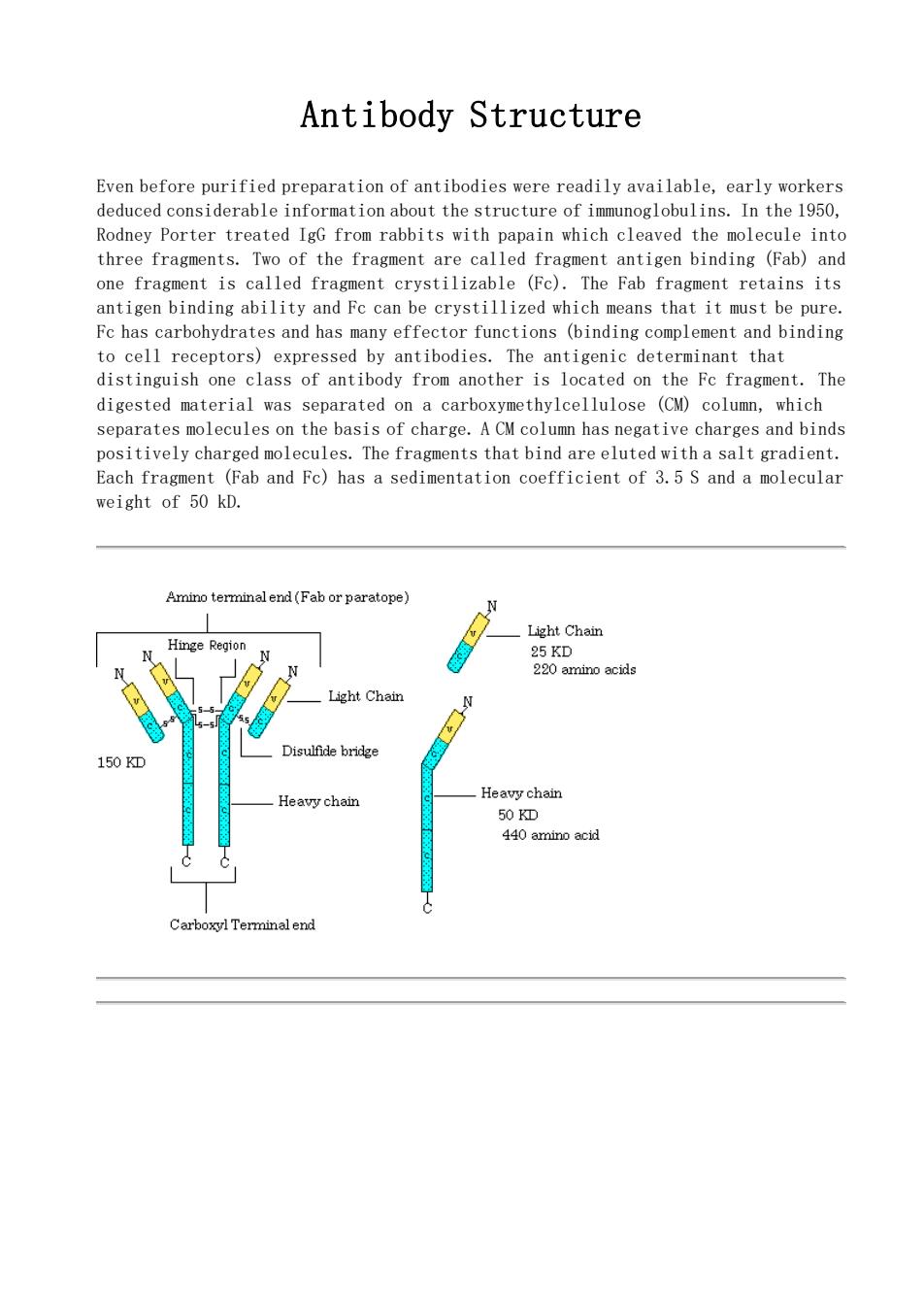正在加载图片...

Antibody Structure Even before purified preparation of antibodies were readily available,early workers deduced considerable information about the structure of immunoglobulins.In the 1950, Rodney Porter treated IgG from rabbits with papain which cleaved the molecule into three fragments.Two of the fragment are called fragment antigen binding (Fab)and one fragmont is called fragment crystilizable (Fe).The Fab fragment retains its antigen binding ability and Fc can be crystillized which means that it must be pure. Fc has carbohydrates and has many effector functions (binding complement and binding to cell receptors)expressed by antibodies.The antigenic determinant that distinguish one class of antibody from another is located on the Fc fragment.The digested material was separated on a carboxymethylcellulose (CM)column,which separates molecules on the basis of charge.A CM column has negative charges and binds positively charged molecules.The fragments that bind are eluted with a salt gradient. Each fragment (Fab and Fc)has a sedimentation coefficient of 3.5 S and a molecular weight of 50 kD. Amino terminalend(Fab or paratope) Hinge Region Light Chain Light Chain Disulfide bridge 50D ainal endAntibody Structure Even before purified preparation of antibodies were readily available, early workers deduced considerable information about the structure of immunoglobulins. In the 1950, Rodney Porter treated IgG from rabbits with papain which cleaved the molecule into three fragments. Two of the fragment are called fragment antigen binding (Fab) and one fragment is called fragment crystilizable (Fc). The Fab fragment retains its antigen binding ability and Fc can be crystillized which means that it must be pure. Fc has carbohydrates and has many effector functions (binding complement and binding to cell receptors) expressed by antibodies. The antigenic determinant that distinguish one class of antibody from another is located on the Fc fragment. The digested material was separated on a carboxymethylcellulose (CM) column, which separates molecules on the basis of charge. A CM column has negative charges and binds positively charged molecules. The fragments that bind are eluted with a salt gradient. Each fragment (Fab and Fc) has a sedimentation coefficient of 3.5 S and a molecular weight of 50 kD